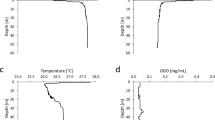Abstract
Three dibenzofuran (DF)-degrading strains were newly isolated from roots of white clover (Trifolium repens L.) and poplar trees grown in DF-contaminated soil samples. These strains, designated KD2, KD7, and PD1, were characterized as Comamonas sp. on the basis of their 16S rDNA sequences and physiological characteristics. The metabolites produced when strain KD7 was incubated with DF were identified by gas chromatography–mass spectrometry (GC-MS) analysis. Interestingly, strain KD7 was found to have two pathways for DF degradation, beginning with angular dioxygenation at carbons 4 and 4a, and lateral dioxygenation at carbons 1 and 2, respectively. Furthermore, strains KD2 and KD7 not only achieved efficient root colonization in clover but also promoted clover growth. They are the first reported Comamonas sp. strains capable of utilizing DF as a sole carbon source. This provides additional information on the diversity of DF-degrading bacteria.
Similar content being viewed by others
Author information
Authors and Affiliations
Rights and permissions
About this article
Cite this article
Wang, ., Yamazoe, ., Suzuki, . et al. Isolation and Characterization of Dibenzofuran-Degrading Comamonas sp. Strains Isolated from White Clover Roots. Curr Microbiol 49, 288–294 (2004). https://doi.org/10.1007/s00284-004-4348-x
Issue Date:
DOI: https://doi.org/10.1007/s00284-004-4348-x




